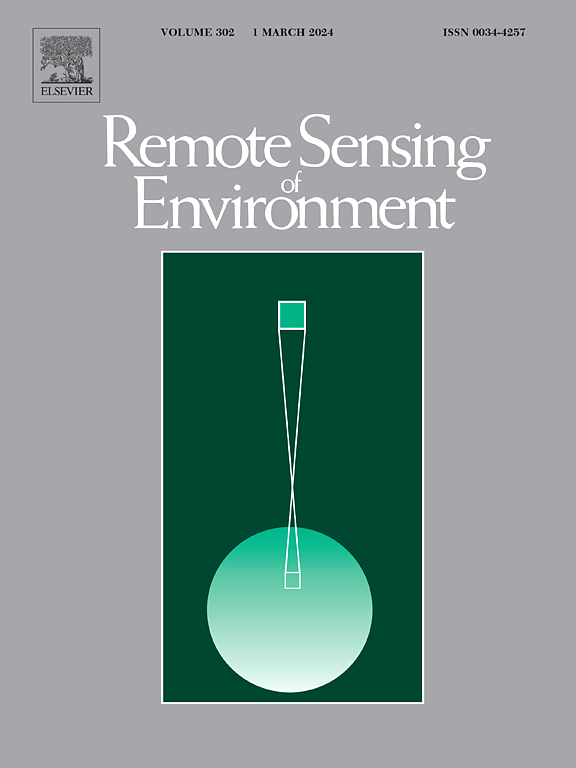PARAN: A novel physics-assisted reconstruction adversarial network using geostationary satellite data to reconstruct hourly sea surface temperatures
IF 11.1
1区 地球科学
Q1 ENVIRONMENTAL SCIENCES
引用次数: 0
Abstract
Diurnal variability in sea surface temperature (SST) significantly influences ocean–atmosphere thermal interactions. Conventional numerical methods for reconstructing hourly SST are limited by high computational demands and difficulties in accommodating real-time atmospheric and oceanic conditions. Therefore, this study introduces the Physics-Assisted Reconstruction Adversarial Network (PARAN), a novel deep-learning framework that reconstructs high-resolution (2 km), hourly SST using geostationary satellite data. By integrating numerical model knowledge and leveraging generative adversarial network architectures, PARAN achieves enhanced reconstruction performance. We applied the PARAN framework to the Northwest Pacific region, generating a continuous, hourly subskin SST layer from January 2019 to December 2021. The network was validated against high-resolution satellite data and in situ buoy observations, demonstrating substantial accuracy improvements over existing high-resolution numerical models (GLO12v4 and HYCOM). We obtained higher correlation coefficients (0.994 and 0.982), negligible biases (0.007 and −0.165), and lower root mean square errors (0.435 and 0.766) than those of existing models when comparing PARAN with drifting and mooring buoys, respectively. In particular, PARAN effectively captured detailed spatiotemporal SST variations, including diurnal warming, and showed robustness under both clear and cloudy conditions.
PARAN:一种新的物理辅助重建对抗网络,利用地球静止卫星数据重建每小时海面温度
海表温度的日变率对海气热相互作用有显著影响。传统的逐时海表温度重建方法计算量大,且难以适应实时大气和海洋条件。因此,本研究引入了物理辅助重建对抗网络(PARAN),这是一种新的深度学习框架,可以使用地球静止卫星数据重建高分辨率(2公里)每小时的海温。通过集成数值模型知识和利用生成对抗网络架构,PARAN实现了增强的重建性能。我们将PARAN框架应用于西北太平洋地区,生成了2019年1月至2021年12月的连续逐时皮下海温层。该网络通过高分辨率卫星数据和现场浮标观测进行了验证,表明比现有高分辨率数值模型(GLO12v4和HYCOM)的精度有了很大提高。与现有模型相比,我们分别获得了更高的相关系数(0.994和0.982)、可忽略的偏差(0.007和- 0.165)和更低的均方根误差(0.435和0.766)。PARAN有效地捕获了详细的海温时空变化,包括日变暖,并且在晴朗和多云条件下都表现出鲁棒性。
本文章由计算机程序翻译,如有差异,请以英文原文为准。
求助全文
约1分钟内获得全文
求助全文
来源期刊

Remote Sensing of Environment
环境科学-成像科学与照相技术
CiteScore
25.10
自引率
8.90%
发文量
455
审稿时长
53 days
期刊介绍:
Remote Sensing of Environment (RSE) serves the Earth observation community by disseminating results on the theory, science, applications, and technology that contribute to advancing the field of remote sensing. With a thoroughly interdisciplinary approach, RSE encompasses terrestrial, oceanic, and atmospheric sensing.
The journal emphasizes biophysical and quantitative approaches to remote sensing at local to global scales, covering a diverse range of applications and techniques.
RSE serves as a vital platform for the exchange of knowledge and advancements in the dynamic field of remote sensing.
 求助内容:
求助内容: 应助结果提醒方式:
应助结果提醒方式:


